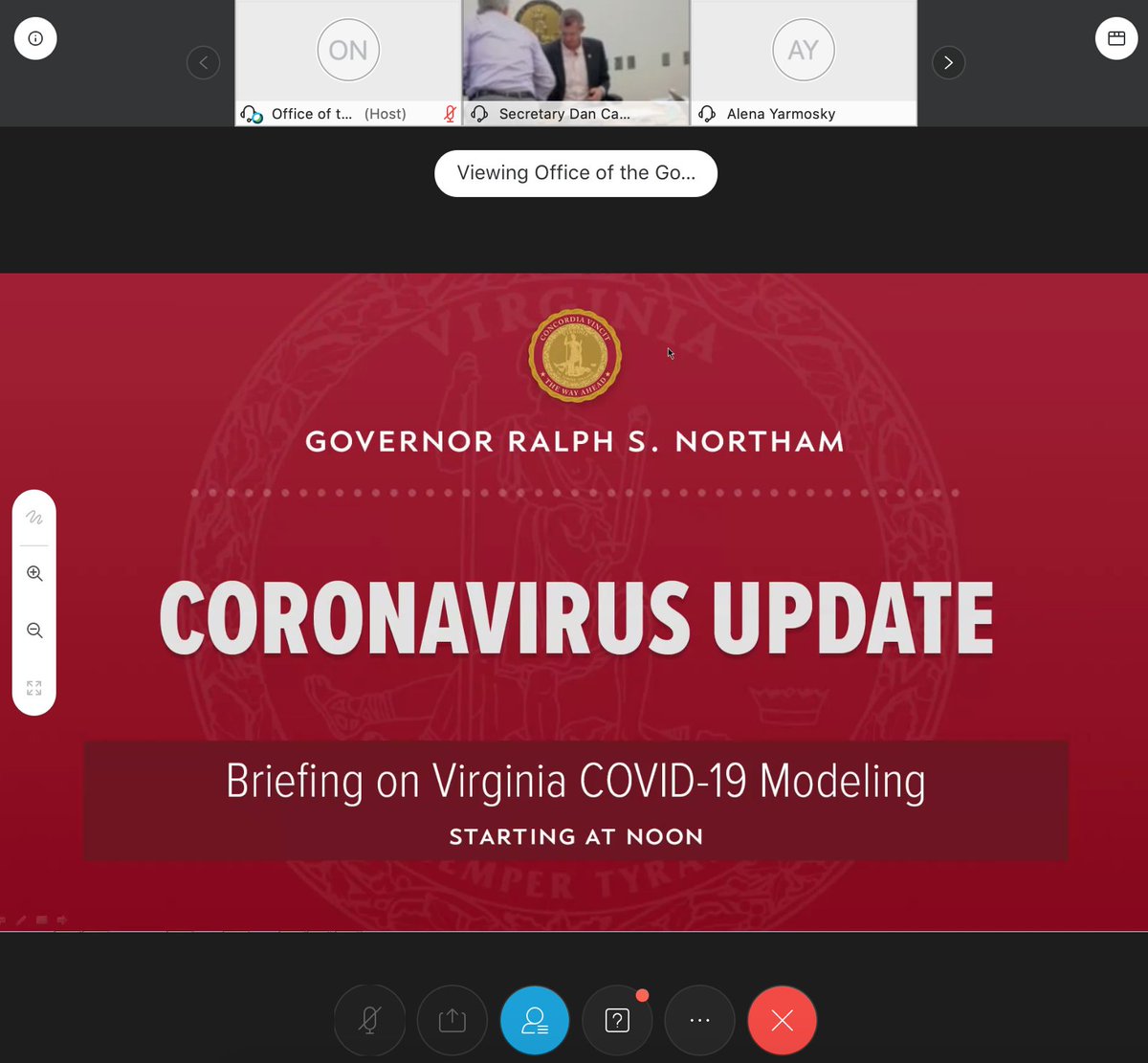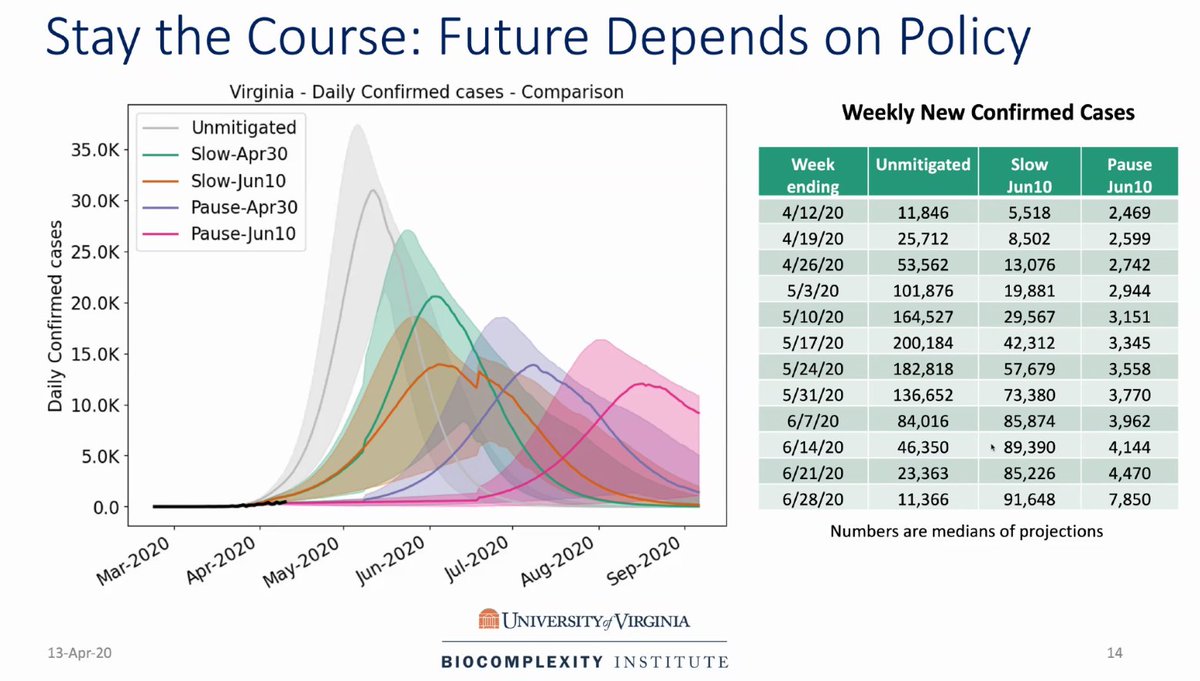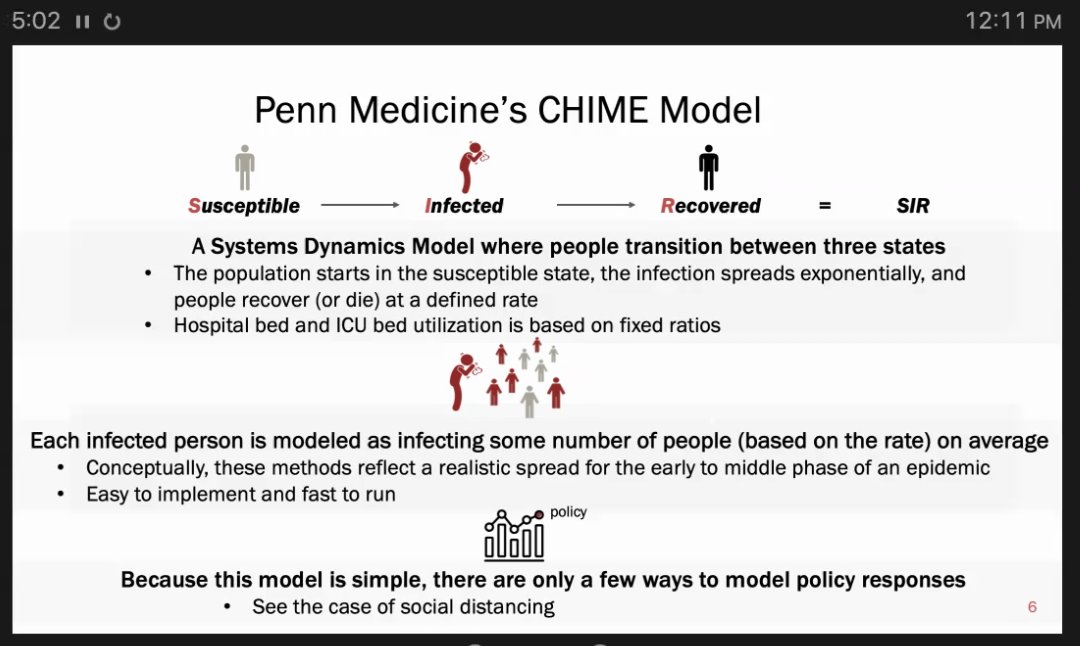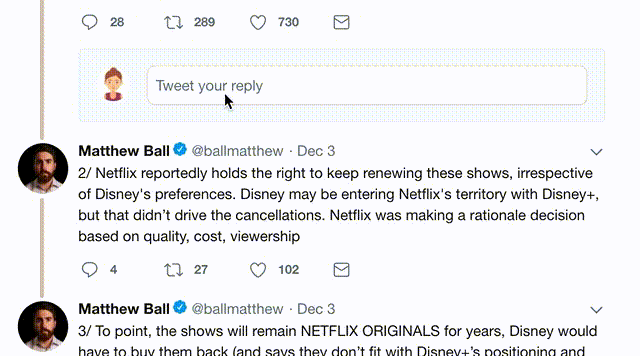@JakeBurnsCBS6 will be covering for @CBS6


Q - Why did the Virginia specific model take longer than others? What were the challenges?
Lewis: The seasonality has been plaguing our community for some time. This novel coronavirus doesn't. Evidence shows there may be some reductions due to weather. Hard to detangle if that's just weather or societal response.
Lewis: That's covering when people are infectious and participating in spreading the virus/in public. Assumes people are removed from public life (isolating/hospitalized).
Price: Better estimates for the input value. How many people have it now, less uncertainty in the models. But hopefully, this info would also be used to change policies/behaviors (such as self-isolation).
Barrett: No specific guidance, but as this info becomes better understood and we better understands how these actions can move us forward. It will let use better understand what we can do without reigniting the virus.





















